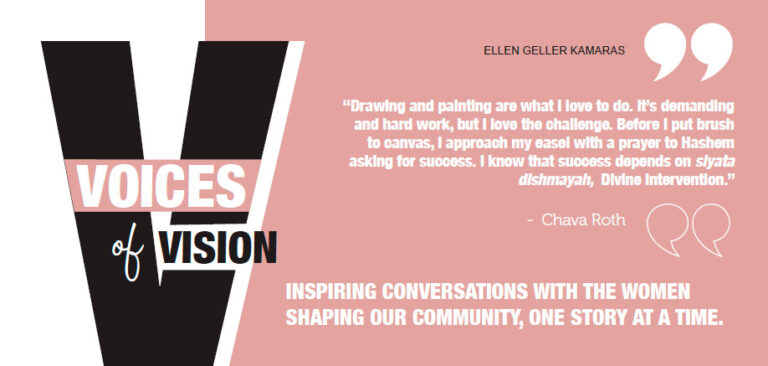Victor Cohen
Over the past several decades, our community has been blessed with tremendous growth and success. Our institutions have flourished, our businesses have expanded, and our schools and synagogues have been beautifully renovated. Families celebrate joyous occasions with Pesach vacations, weddings, engagements, and large sebets. In many ways, community life has never been stronger.
Yet, this picture is not complete. Behind the scenes, there are families among us who quietly struggle to meet even their most basic needs. Some cannot put enough food on the table. Others find it difficult to afford a proper Shabbat meal or the extra expenses that come with our many Jewish holidays. For these parents, the most painful challenge of all is explaining to their children why they cannot provide what others seem to enjoy so easily.
In a community as blessed as ours, it may seem unthinkable that families could be struggling to put food on the table. And yet, this is a reality.
Thankfully, however, struggling families are not without support. For more than 25 years, theTomchei Shabbosorganization has stood quietly at the forefront of this effort – ensuring that families maintain their dignity by enabling them to enjoy large, scrumptious meals on Shabbat and holidays. Working discreetly and with great sensitivity, and without much advertising, publicity or fanfare, Tomchei Shabbos has become a lifeline for countless families.
Today, this vital organization turns to the community it has long served, asking for the help it needs to continue its essential work.
More Food to More Families
Based in Lakewood, NJ, the broader Tomchei Shabbos network is a 14 million-dollar organization, supporting over 2,000 families,each according to its particular financial needs. Those in the greatest need of assistance comeonce a week to receive food for Shabbat. Families who require less help making ends meet receive assistance monthly. There is also a “holiday-only section” providing food for those who need help only with their holiday expenses. Lines extend out into the highway as people receiving weekly or monthly assistance come to the Tomchei Shabbos warehouse where they are generously provided with food.
What sets Tomchei Shabbos apart from other organizations is its direct and efficient approach: it provides food itself, rather than simply offering financial assistance. By leveraging its infrastructure and strategic location in Lakewood, where food can be sourced at lower costs, Tomchei Shabbos maximizes every dollar to deliver more food to more families. With remarkable efficiency and complete discretion, the organization ensures that those it helps receive what they need while preserving their dignity.
For the past 25 years, our community has turned to Tomchei Shabbos under the dedicated guidance of Rabbi Ben Sion Kaye. Rabbi Kaye personally oversaw and carried out countless deliveries, often doing the work himself, to quietly and discreetly support families through Shabbat, holidays, and other occasions. His tireless efforts behind the scenes ensured that no family felt shame and that every table could be filled with the joy and honor befitting Shabbat and Yom Tov.
Tomchei Shabbat of the Jersey Shore
When Rabbi Kaye started this sacred work, he was delivering Pesach meals to 35 families. Unfortunately, the number of families in need of assistance has tripled.
For 25 years, Tomchei Shabbos’ Lakewood headquarters handled all this work themselves, but several months ago, around Pesach time, the organization soberly informed Rabbi Kaye that they would need our community’s assistance in order to continue providing food to our members.
Rabbi Kaye quickly convened a meeting with all the rabbis of the Jersey Shore to discuss the situation. They decided right away to move forward and open a new Sephardic Division of Tomchei Shabbat under the leadership of the director of development,Abie Tawil, who lives in Deal with his wife, Susan.And thus Tomchei Shabbat of the Jersey Shore was born.
The founders of the new division hit the ground running. Fundraising drives were held in the community’s synagogues each week. Numerous conversations were held with prospective donors, and significant sums of moneywere raised for struggling families.
“When we help others welcome the Shabbat, we’re welcoming blessing and peace into our homes,” says committee member Hymie Dana, who is heavily involved with Tomchei Shabbat. “Supporting Tomchei Shabbat is definitely a source of berachah for our homes.”
“Helping to feed those in need is one of the biggest mitzvot,” added Ricky Esses, who is also involved. “But giving a sense of joy and hope to these families on Shabbat and holidays is the greatest mitzvah. We must continue taking care of our community, and we must first start with those most in need. Tomchei Shabbat of the Jersey Shore does that.”
The Call of Our Community’s Rabbis
The initiative has been graced with the involvement of many community rabbis, who have lauded the organization’s work. Rabbi Shaul Kassin of Congregation Magen David said, “Tomchei Shabbat gives a tremendous amount of relief to these families who cannot imagine what they are going to do for Shabbat.”
“It is unimaginable in our eyes, but it really exists,” Rabbi David Ozeri noted. “We know for a fact that there are people in our community who cannot put food on the table for Shabbat.”
“There are families in our community that live down the block from you and me who can’t look forward to Friday night,” Rabbi Joey Haber said. “Tomchei Shabbat will ensure that every family in Deal is able to have the gift that all of us have.”
Rabbi Shlomo Diamond added, “We have an organization in our community called Tomchei Shabbat of the Jersey Shore that actually gives food to families throughout the year.”
Rabbi Moshe Douek of Eatontown Synagogue said that he personally knows many people who receive the boxes from Tomchei Shabbat, and when these packages, arrive, “a huge stress is taken off their head.”
“It is crucial for us to support Tomchei Shabbat because they support our community,” Rabbi Eli Mansour said.
Rabbi Joey Mizrahi called Tomchei Shabbat an “amazing organization” that “gives people basic necessities…that they need for weekdays, Shabbat, and just to live life with dignity.”
Rabbi Avi Harari of Ohel Yishak of Allenhurst described Tomchei Shabbat as “embodying the highest form of tzedakah,” noting how it extends help “with such discretion and dignity that families can rebuild their lives without shame, knowing their community stands behind them in their time of need.”
“Tomchei Shabbat is an organization that provides vital assistance to the families in need in our Jersey Shore community,” Rabbi Reuven Semah of Magen Abraham said. “Especially helpful are their food distributions during holiday times when expenses are high.” The rabbi then appealed to the community, imploring, “Please donate generously.”
“It is an honor to recommend Tomchei Shabbat, an organization which beautifully exemplifies the Torah values of caring for those in need,” Rabbi Aviad Bar Hen of Cedar Avenue Synagogue said. “With dignity and compassion, they ensure that every family has access to Shabbat meals, fulfilling the sacred mitzvah of ma’achil re’evim – feeding the hungry.”
Many other rabbis also vouched for the organization, including Rabbi Shmuel Choueka, Rabbi David Tawil, Rabbi David Sutton, Rabbi David Nakash, Rabbi Raymond Beyda, Rabbi Meyer Yedid, and Rabbi David Ashear.
Becoming Eliyahu Ha’navi
Last month, to build on its growing momentum, Tomchei Shabbat held its inaugural community event at the home of Franny and Morris Beyda. The evening was both elegant and uplifting, bringing together inspirational speakers and community members united for a common cause.
The program opened with words from Rabbi Moshe Malka, who emphasized the importance of cultivating gratitude and avoiding attitudes that withhold blessing – such as excessive worry, anxiety, and ingratitude. When Hashem grants us blessings, he noted, we must share them. In this way, the work of Tomchei Shabbat – easing the worries of families in need and extending the blessings of our community to those less fortunate – embodies the path to continued success and divine favor.
Abie Tawil then spoke passionately about the responsibility we share as a community. “Through these few weeks,” he reflected, “I realized that we had to create this as a community. There are over 100 families who need our help. We have the sources, the distribution, and the mechanics to continue it. So we have to, and we have to save the ones who call the rabbis, saying, ‘We can’t afford to live without it.’ It’s so special that we have our community to step up and help our people.”
Shmuel Kairey told a story about a man who very much wished to meet Eliyahu Hanavi, and so he approached the Baal Shem Tov to ask where he could find him. The Baal Shem Tov told him to bring food to a certain town on Friday, and ask around for somebody to host him for Shabbat. He would then find Eliyahu Hanavi.
The man did precisely as he was told. He purchased food, brought it to the town, and asked around for hospitality. He ended up in the home of a poor orphan and widow. It was a beautiful Shabbat, but the man did not find Eliyahu Hanavi.
After Shabbat, he returned to the Baal Shem Tov, who told himto do the same thing the next Shabbat. Once again, the man bought food and went to the town. This time, already knowing the orphan and widow, he proceeded to their home, and spent another uplifting Shabbat with them – but once again, without encountering Eliyahu.
The Baal Shem Tov told him to go back once more, and so he made his way back to the town for Shabbat with more food.
This time, the window to the orphan’s house was open, and the man could hear the orphan, lying weakly in bed, saying to his mother, “I’m very sick, I don’t know what to do.”
The widow replied: “Hashem will send Eliyahu Hanavi again this Shabbat. He sent him the past two weeks, Hashem will send him again!”
The man stopped looking for Eliyahu Hanavi, as he understood what the Baal Shem Tov was trying to teach him. If you want to meet Eliyahu Hanavi, you should be like him. Take care of the orphan, take care of the widow, help those who cannot help themselves.
Through the work of Tomchei Shabbat, Shmuel Kairey said, “We are emulating Eliyahu Hanavi,” expressing his fervent hope that, with Gd’s help, the organization will continue assisting everyone in need.
Harry Adjmi, who led the fundraising rounds, spoke of his relationship with Rabbi Ben Sion Kaye of The Sephardic Torah Center, saying, “I don’t believe there is a single Jew in the world whom Rabbi Kaye does not have empathy for.”
He then added, “You couldn’t have heard more. Every rabbi in the community, whether they were on Joe Mansour’s video, or came this morning, showed up to support Tomchei Shabbat.”
Rabbi Meyer Yedid also spoke, emphasizing the important role that Jews have in the world. He explained that we were not chosen as Gd’s special nation because of our ability to do great things. Rather, “Hashem chose us because even when we are so big, when we get bigger, we ask more of ourselves.” We Jews are always saying, “I’m not doing enough!” – and this, Rabbi Yedid said, is one of the most special qualities of a Jew, his desire to continue doing more.
One committee member commented, “Since I started fundraising, we’ve gotten dozens of calls from people you’d never think of. The father’s trying to work and trying to make it work, even the mother is working. A lot of them are widows or divorcees.” People come to Tomchei Shabbat at their lowest, and it’s up to Tomchei Shabbat to help give these families the support that they need to get back on their feet.
No matter the circumstance – whether a family faces the loss of a loved one, a sudden job loss, or any unforeseen hardship – Tomchei Shabbat is there to lift them up, restoring hope, stability, and dignity with quiet compassion. It is a truly beautiful organization, built on the values of kindness and discretion, ensuring that no member of our community is left behind. With the continued support of the Jersey Shore community, Tomchei Shabbat will remain a steadfast source of strength, ready to help every family who turns to them in their time of need.












